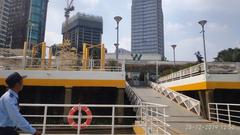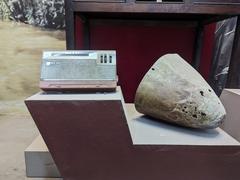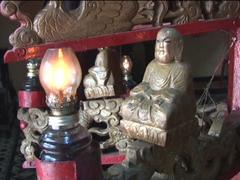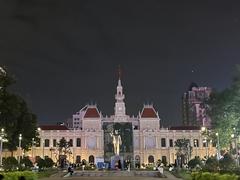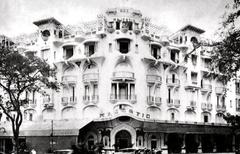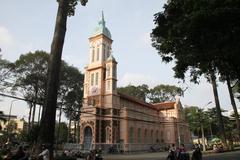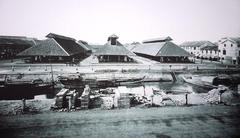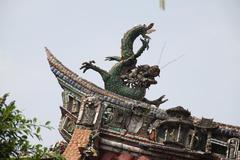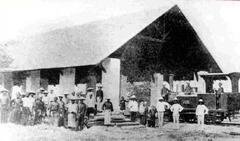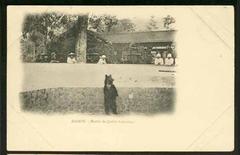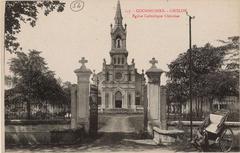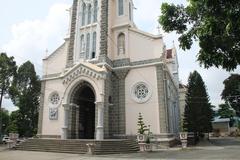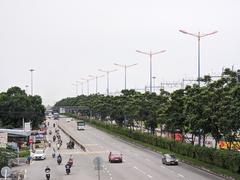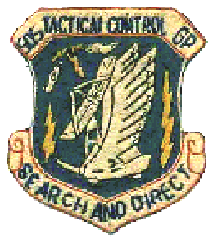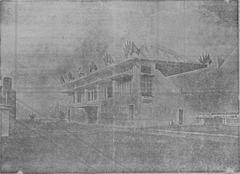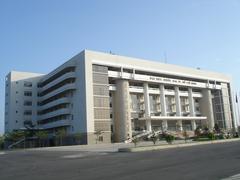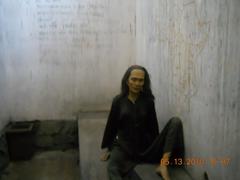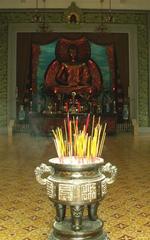Phú Thọ Hoà Visiting Hours, Tickets, and Historical Significance in Ho Chi Minh City
Date: 19/07/2024
Introduction
Discover the hidden gem of Ho Chi Minh City, Phú Thọ Hoà, a site steeped in historical and cultural significance. This comprehensive guide offers a detailed exploration of Phú Thọ Hoà, from its origins during the First Indochina War to its crucial role in the Vietnam War. Particularly renowned for the Phú Thọ Hoà Tunnels, this network of underground passages showcases the resilience and ingenuity of the Viet Cong fighters. Visitors can immerse themselves in this poignant piece of history through guided tours, museums, and interactive exhibits. With practical information on visiting hours, ticket prices, and nearby attractions, this guide serves as an essential resource for anyone looking to delve into Vietnam’s rich cultural heritage. Whether you’re a history enthusiast or a casual traveler, Phú Thọ Hoà offers a unique, educational, and deeply moving experience (Vietnam Online).
Table of Contents
- Introduction
- Origins and Early History
- Development During the Vietnam War
- Structure and Functionality
- Historical Significance
- Preservation and Tourism
- Educational Value
- Cultural Impact
- Visitor Experience
- Special Events and Nearby Attractions
- Photographic Spots
- FAQ
- Conclusion
- Stay Up to Date
Origins and Early History
Phú Thọ Hoà, located in Ho Chi Minh City, Vietnam, is a site of significant historical importance due to its role during the Vietnam War. The area is most renowned for the Phú Thọ Hoà Tunnels, an extensive network of underground passages used by the Viet Cong. These tunnels were constructed in the late 1940s during the First Indochina War against the French colonial forces. Initially built as a means of hiding and protecting local guerrilla fighters and villagers from French military operations, they later played a crucial role in the Vietnam War.
Development During the Vietnam War
The tunnels of Phú Thọ Hoà gained even greater prominence during the Vietnam War (1955-1975). They were expanded and fortified to serve as a strategic base for the Viet Cong. The tunnels played a crucial role in the Tet Offensive of 1968, a major turning point in the war. The offensive was a coordinated series of North Vietnamese attacks on more than 100 cities and outposts in South Vietnam. The tunnels provided a secure location for planning and launching these attacks, as well as for storing weapons, food, and medical supplies.
Structure and Functionality
The Phú Thọ Hoà Tunnels are a testament to the ingenuity and resilience of the Vietnamese people. The tunnels are approximately 1.5 kilometers long and consist of multiple levels, with some sections reaching depths of up to 10 meters. They were designed to be narrow and low, making it difficult for larger, heavily armed soldiers to navigate. The tunnels included living quarters, kitchens, storage areas, and even makeshift hospitals. Ventilation shafts were cleverly disguised as termite mounds to avoid detection by enemy forces.
Historical Significance
The Phú Thọ Hoà Tunnels are not just a symbol of the Vietnam War but also a representation of the broader struggle for Vietnamese independence and self-determination. The tunnels highlight the resourcefulness and determination of the Viet Cong and the local population in their fight against foreign occupation. The site serves as a poignant reminder of the sacrifices made during the war and the resilience of the Vietnamese people.
Preservation and Tourism
Today, the Phú Thọ Hoà Tunnels are preserved as a historical site and are open to the public. The site has been maintained to provide visitors with an authentic experience of what life was like for the Viet Cong fighters and local villagers during the war. Guided tours are available, offering detailed explanations of the tunnels’ construction, their strategic importance, and the daily lives of those who lived and fought there.
Educational Value
The Phú Thọ Hoà Tunnels offer significant educational value, providing insights into the tactics and strategies used during the Vietnam War. The site is an important resource for historians, researchers, and students studying the conflict. It also serves as a powerful educational tool for younger generations, helping them understand the complexities of the war and the impact it had on the Vietnamese people.
Cultural Impact
The tunnels have also had a lasting cultural impact, influencing Vietnamese literature, film, and art. They are often depicted in works that explore themes of resistance, survival, and national identity. The tunnels have become a symbol of Vietnamese ingenuity and perseverance, celebrated in various cultural expressions.
Visitor Experience
Location
Phú Thọ Hoà is located in the Tân Phú District of Ho Chi Minh City.
Visiting Hours
The site is typically open from 8:00 AM to 5:00 PM daily.
Tickets
There is a nominal entrance fee, which includes access to the tunnels and the museum.
Guided Tours
Guided tours are available in multiple languages, providing in-depth information about the site’s history and significance.
Accessibility
The tunnels are narrow and may not be suitable for visitors with mobility issues. However, the museum and surrounding areas are accessible.
Facilities
The site includes restrooms, a gift shop, and a small café.
Special Events and Nearby Attractions
Phú Thọ Hoà occasionally hosts special events and reenactments that bring the history of the tunnels to life. Visitors can also explore nearby attractions such as the War Remnants Museum and the Independence Palace in Ho Chi Minh City.
Photographic Spots
The site offers several excellent spots for photography, including the entrance to the tunnels, the museum exhibits, and the lush surrounding landscape. Visitors are encouraged to capture their experience while respecting the historical significance of the site.
FAQ
Q: What are the Phú Thọ Hoà Tunnels? A: The Phú Thọ Hoà Tunnels are an extensive network of underground passages used by the Viet Cong during the Vietnam War.
Q: Where are the Phú Thọ Hoà Tunnels located? A: They are located in the Tân Phú District of Ho Chi Minh City, Vietnam.
Q: What are the visiting hours for Phú Thọ Hoà? A: The site is typically open from 8:00 AM to 5:00 PM daily.
Q: How much are the tickets to visit Phú Thọ Hoà? A: There is a nominal entrance fee that includes access to the tunnels and the museum.
Q: Are guided tours available? A: Yes, guided tours are available in multiple languages.
Q: What facilities are available at Phú Thọ Hoà? A: The site includes restrooms, a gift shop, and a small café.
Conclusion
The Phú Thọ Hoà Tunnels are a vital part of Vietnam’s historical and cultural heritage. They offer a unique glimpse into the country’s tumultuous past and the resilience of its people. For anyone visiting Ho Chi Minh City, a trip to Phú Thọ Hoà provides a profound and educational experience, shedding light on the complexities of the Vietnam War and the enduring spirit of the Vietnamese people.
Stay Up to Date
For more information and updates, download the Audiala mobile app. Follow us on social media and check out our other related posts to stay informed about Vietnam’s rich history and cultural heritage.
References
- Explore Phú Thọ Hoà - Visiting Hours, Tickets, and Historical Significance in Ho Chi Minh City, 2024, Vietnam Online (Vietnam Online)
- Essential Visitor Tips for Phú Thọ Hoà in Ho Chi Minh City - Tickets, Hours, and Travel Advice, 2024, Vietnam Travel (Vietnam Travel)
